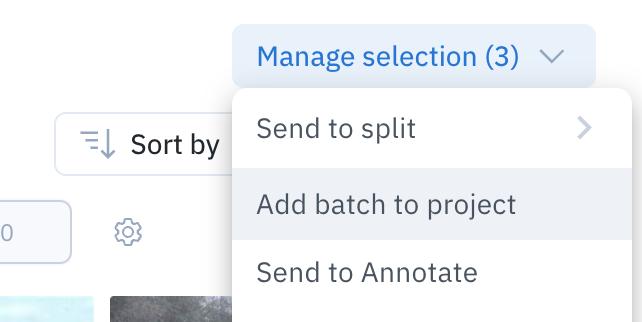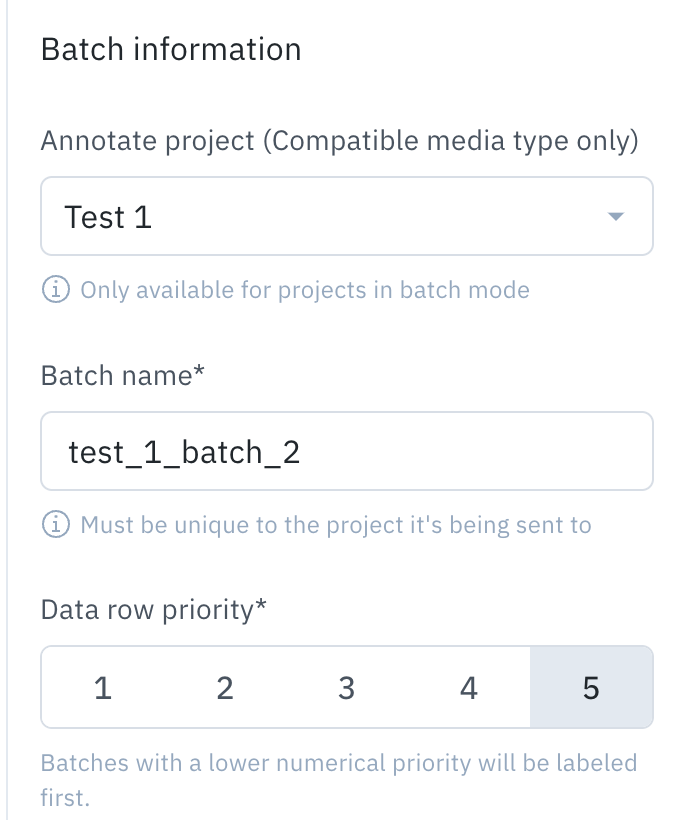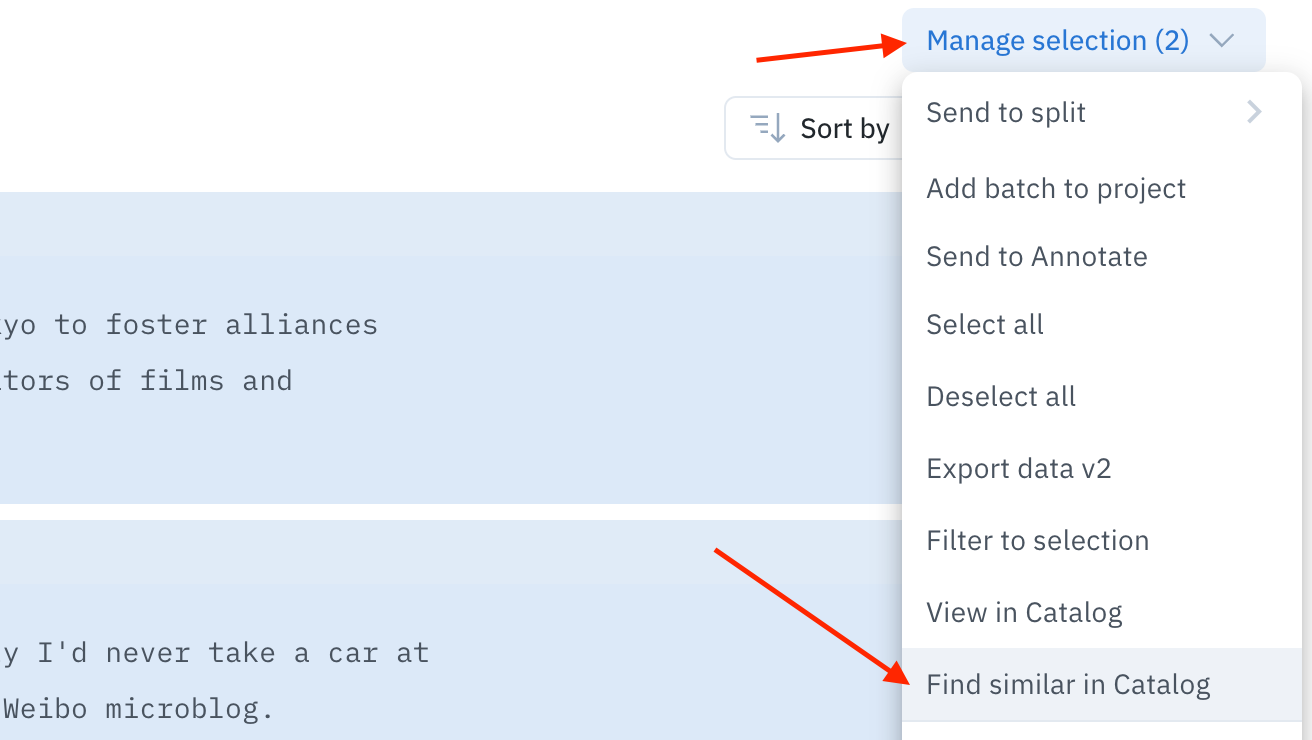Send to split
When you select a set of data rows, and you select Manage selection, you will see an option to Send to split. Use this option to send the selected data rows to one of the following data splits: Train, validation, test.
Add batch to a project
When you select a set of data rows in a model run, you have the option to send the data rows to a labeling project. Note: If you want to send data rows to a project that is configured with consensus, you will need to use Add batch to project. Follow these steps to send data rows as a batch to a project:- Go to Model > Experiments > Model runs and use the filters to find the data rows you want to label.
- From the filtered results, manually select the data rows you want to send to the labeling project (or choose Select all to include all of the data rows in the filtered results).
- Select Manage selection to display the available options. Then, select Add batch to project

- Select a project from the dropdown menu.
- (Optional) Update the Batch name and the Data row priority.

- Click Submit batch to send the selected data rows to the specified project.
Send to Annotate
See Send predictions to annotate.Find similar in Catalog
Note: The maximum data rows you can include in the selection in order to use Find similar in Catalog is 20 data rows.- Go to Model > Experiments > Model runs and use the filters to find the data rows you want to label.
- Select a maximum of 20 data rows.
- Select Manage selection > Find similar in Catalog.

- This will take you to the Catalog view with an automatically configured Similar tofilter which will return similar data rows in your datasets.

Filter to selection
- In the cluster view, use the selection tool to isolate data rows for further investigation. In the gallery view, select one or more thumbnails to isolate for further investigation.
- Once you have selected a set of data points, click Manage selection, then click Filter to selection. In the cluster view this will regenerate the cluster view to only include the data points in the selection area. In the gallery view, this will return the data rows specified.